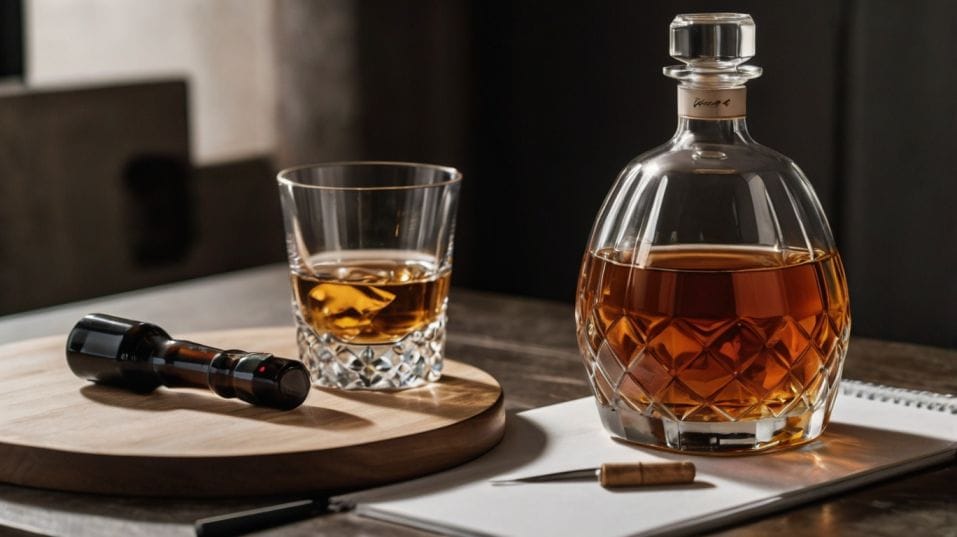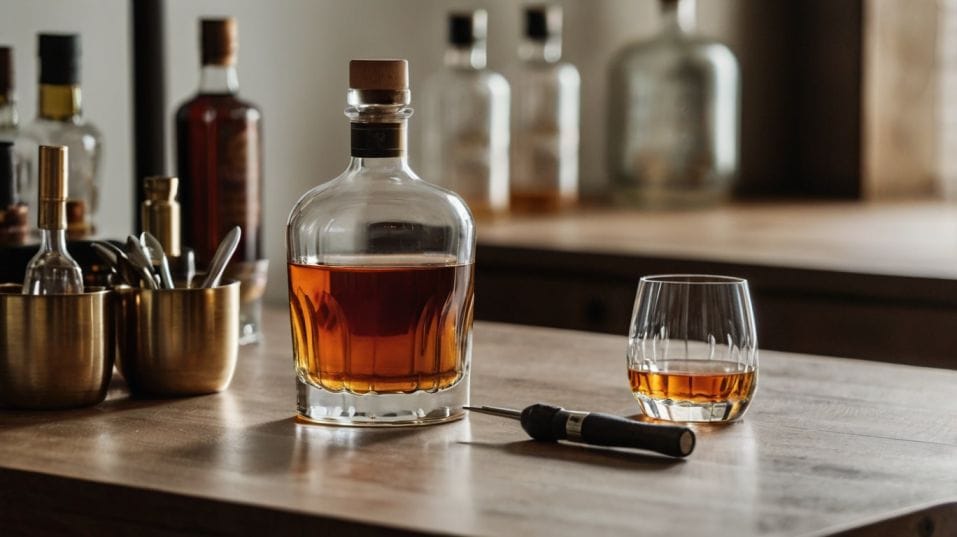How to Elevate Your Whiskey Nights at Home
Learn how to upgrade your whiskey nights with smart pours, real tasting skills, and a setup that deepens your flavor experience at home.

What if your next whiskey pour could do more than just relax you—what if it could teach you? If you’re starting to take whiskey seriously, home is where you sharpen your taste, not just take the edge off.
With the right mindset and setup, each pour becomes a skill-building moment. Whether you're here to taste smarter or collect better, this guide helps you elevate your whiskey nights from casual sipping to purposeful discovery.
Pour Like It Matters
Start by ditching the guesswork. That lazy splash straight from the bottle? It’s holding you back. Pouring with precision—say, 1 to 1.5 ounces—gives you a consistent baseline.
It slows you down, makes you more mindful, and lets you tune in to the whiskey’s progression from first sip to finish. It also stops you from overpouring something rare or expensive when you’re “just tasting.”
Measure out your pour and give it a moment. Whiskey evolves in the glass. The nose can open up dramatically with just five minutes of air.
Some releases come off sharp or muted at first but shift beautifully with a little time. Rushing the pour is like skipping the foreplay—you miss the nuance.
And then there’s the glass. Yes, it matters. More than you think. Tulip-shaped glasses like the Glencairn or Copita channel aromas directly to your nose and allow you to swirl without spillage.
That surface area-to-volume ratio? It’s not just for show. It brings structure to your nosing routine and helps separate the wheat from the ethanol.

Control the Temperature, Control the Flavor
Whiskey isn’t ice-cold beer. Temperature changes everything—from how aromas rise to how flavors register on your tongue.
Straight out of a fridge or over too much ice, even a good bottle will taste thin and muted. But let it get too warm, and you’re met with a wall of alcohol, bitterness, or cloying sweetness.
The sweet spot? Slightly cool, not cold. Somewhere between 60–65°F is where most whiskeys perform best.
If your home runs warm, store your bottles somewhere darker and cooler, away from direct sunlight or heat sources. Use a whiskey stone sparingly if you must—but remember, chilling tightens the flavor window. You’ll lose detail.
For overly “hot” whiskeys—typically higher proof—introduce water. Not a splash. A drop. Use a straw or dropper. Water doesn’t ruin whiskey. It unlocks it.
You’ll often find deeper fruit, spice, or wood notes come alive with just a touch. But go slow. Taste before and after. Learn how dilution changes structure and balance.
Taste to Compare, Not Just Consume
If you’re drinking one whiskey at a time, you’re learning slow. It’s like reading one paragraph from a book and walking away. Tasting two (or three) side by side? That’s where your palate starts to train.
Use Contrast as a Learning Tool
Set up a small flight. You don’t need rare bottles—just contrast. Try a rye against a wheated bourbon. A peated Scotch against a Highland single malt.
A sherry-aged dram against something in ex-bourbon casks. The goal is contrast, not consensus. You’re looking for friction that sharpens your senses.
Take your time with each. Smell, sip, sit with it. Then bounce between them. Revisit each glass after ten minutes. Flavor changes. Memory resets.
You’ll begin noticing finish length, mid-palate weight, spice levels, mouthfeel differences. This is how real tasters build range—and how serious collectors avoid buying blind.
Craft a Clean, Neutral Space
Your surroundings matter more than you think. That vanilla-scented candle burning on the coffee table? It’s wrecking your nose. That charcuterie board with truffle salami and smoky Gouda? Total palate distraction.
Clear your space. Neutral lighting, no perfume, no overpowering snacks. Salted crackers and water should be your only palate resets.
If you're tasting multiple whiskeys, rinse your mouth between pours. Keep a notepad or app open—somewhere to log thoughts without interrupting the flow.
Optimize the Tasting Environment
Music? Fine, but background only. Too loud or too busy, and it shifts your focus. Your brain only has so much sensory bandwidth. Save the Spotify curation for after the tasting.
Even your lighting affects perception. Warm, soft light shows off whiskey’s natural hues and legs far better than harsh LEDs.
Color matters—it can hint at age, cask type, or even filtration. All of these clues feed into your understanding, even subconsciously.
Take Better Notes (That You'll Actually Use)
You don’t need to write a novel about every dram. But a few focused notes per pour? Game changer. Think of your palate like a muscle—you’re training it. Your notes become the record of that work.
Skip the recycled tasting wheel jargon. Don’t worry about saying “stone fruit” or “burnt caramel” if that’s not what you're getting. Say what you taste—rubber bands, pancake syrup, grilled corn, fresh tobacco.
Build a language that’s real to you. Over time, patterns emerge. You’ll find what styles you lean into, what distilleries align with your taste, and what releases to avoid.
Structure Your Notes Simply
Keep it short:
- Nose: What hits first? Does it shift after a minute?
- Palate: What stands out? Sweet, spicy, oily, dry?
- Finish: How long does it linger? Does it fade clean or leave a trail?
When you revisit these notes later, you’ll see how your palate has evolved. You’ll remember the whiskey better, and you’ll buy smarter next time.
Build a Collection That Teaches You Something
A shelf full of expensive bottles doesn’t make you a serious drinker. A shelf that challenges you does.
Don’t chase trends or social media bottle drops. Most of those limited releases? Overhyped. What you want is variety—proof, mash bill, region, cask finish, age.
Start with accessible bottles that offer clear contrasts. The more variables you expose yourself to, the faster your palate matures.
Keep a few open bottles at a time and rotate your pours. Revisit something after a week. Let air do its work. Taste before and after meals. Try the same bottle in winter and summer. Every context teaches.
And don’t hoard. Open the damn bottle. The best whiskey is shared, dissected, remembered. One great pour, properly explored, is worth five unopened trophies collecting dust.
Final Thoughts
Whiskey isn’t just a drink—it’s a skill. If you’re serious about flavor, you can’t fake it. You need structure, attention, and a little bit of obsession. The good news? You can start building that tonight.
Set up your space. Pick two whiskeys with contrast. Pour small. Take your time. Take one honest note.
Don’t wait for the perfect bottle or the perfect mood. Just show up. Taste with intention. Build your palate, one sip at a time. That’s how whiskey nights stop being casual—and start becoming craft.




